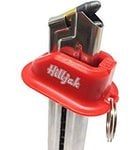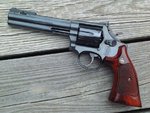GrauGeist
Generalfeldmarschall zur Luftschiff Abteilung
The Artillery model (LP08) is 7.9" - Artillery = ArmyReps:
Luger made a lot of different bbl lengths. Never hear of an Army 7 inch (include chamber for correct bbl length).
The LP08 was also issued to Infantry as well as Luftstreitkräfte pilots.


